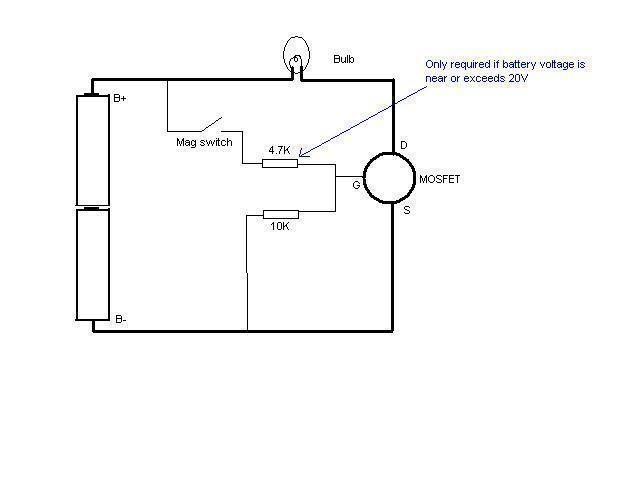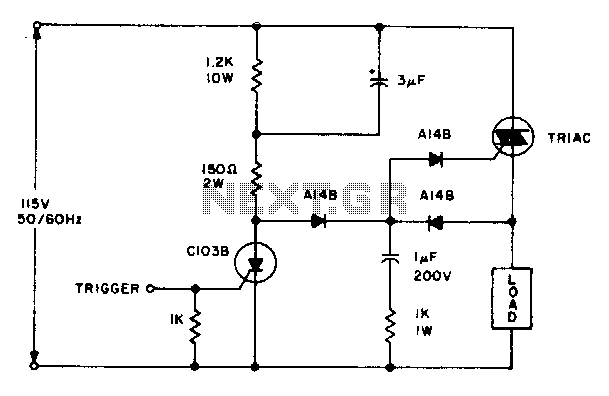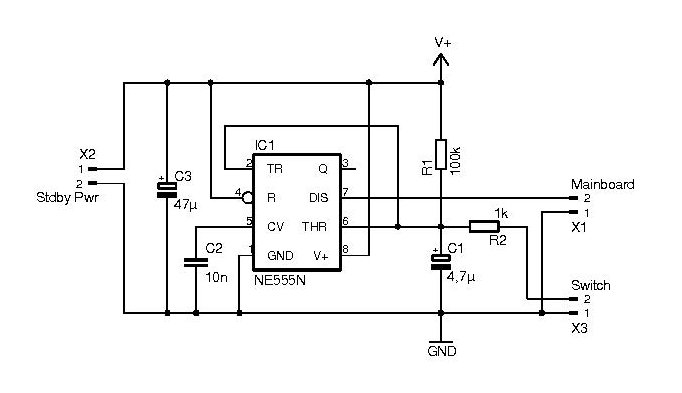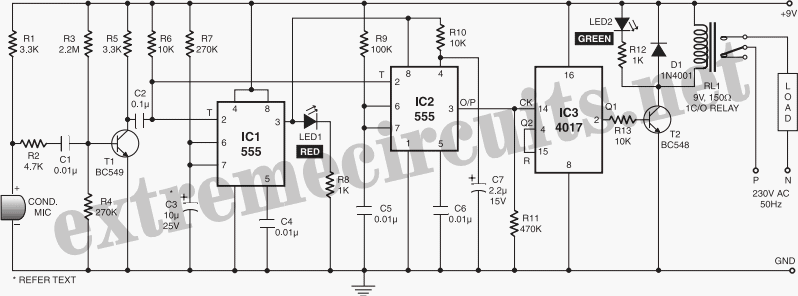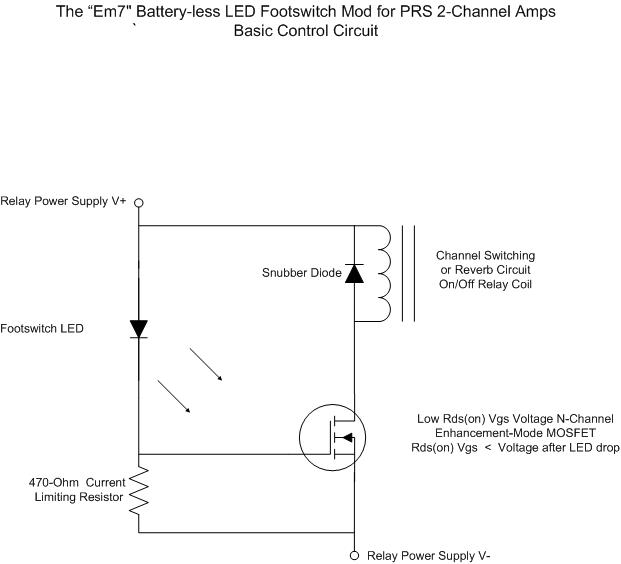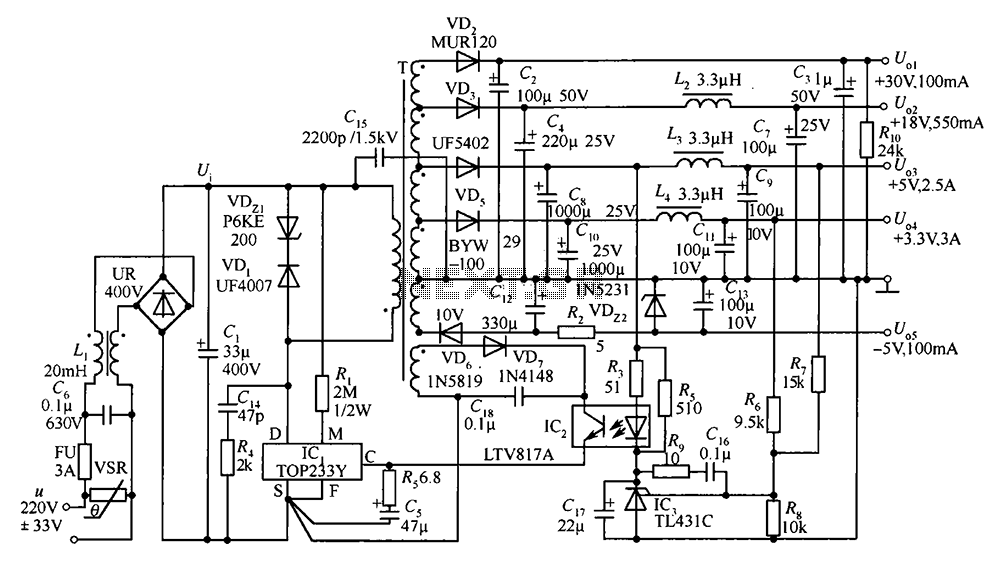
AC-static SPDT switch
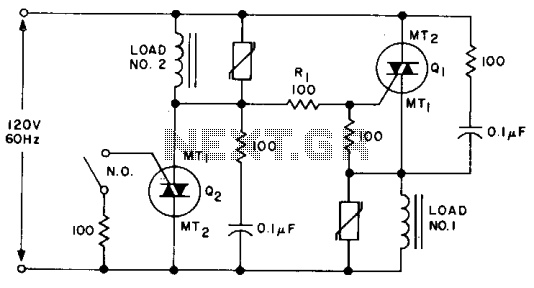
An SPDT solid-state relay is illustrated. When voltage is applied, Q1 will activate, powering load #1, as the full line voltage is present across Q2, providing gate current through R1. When switch S1 is closed, Q2 activates, removing the gate drive from Q1 and powering load #2.
An SPDT (Single Pole Double Throw) solid-state relay is a crucial component in electronic switching applications, enabling control over multiple loads with a single control signal. In this configuration, the relay consists of two main transistors, Q1 and Q2, along with resistors and a switch.
Upon the application of voltage to the relay, Q1 is triggered, allowing current to flow and energizing load #1. The presence of full line voltage across Q2 is essential for this operation, as it ensures that gate current flows through resistor R1, maintaining Q1 in an 'on' state. R1 serves as a gate resistor, limiting the current to Q1 and protecting it from excessive current that could lead to damage.
The operation of the relay can be altered by the position of switch S1. When S1 is closed, it activates Q2, which in turn removes the gate drive from Q1. This action effectively deactivates load #1, as Q1 turns off, and simultaneously activates load #2. This switching mechanism allows for seamless transition between loads, making the circuit versatile for various applications.
The relay's design ensures that it can handle the necessary voltage and current levels for both loads while providing isolation between the control circuit and the load circuit. This isolation is critical for protecting sensitive control electronics from high voltages or currents present in the load circuits. The use of solid-state components also contributes to faster switching times and increased reliability compared to traditional electromechanical relays.
In summary, the SPDT solid-state relay provides an efficient means of controlling multiple loads with a single control input, utilizing the properties of transistors to achieve rapid and reliable switching. Properly designed, this relay configuration can enhance the functionality and safety of various electronic systems.An SPDT solid state relay is shown. When voltage is applied Ql will turn on, activating load #1, because the full line voltage appears across Q2, supplying gate current through Rl. When SI is closed. Q2 turns on removing the gate drive from Ql and activating load #2. 🔗 External reference
An SPDT (Single Pole Double Throw) solid-state relay is a crucial component in electronic switching applications, enabling control over multiple loads with a single control signal. In this configuration, the relay consists of two main transistors, Q1 and Q2, along with resistors and a switch.
Upon the application of voltage to the relay, Q1 is triggered, allowing current to flow and energizing load #1. The presence of full line voltage across Q2 is essential for this operation, as it ensures that gate current flows through resistor R1, maintaining Q1 in an 'on' state. R1 serves as a gate resistor, limiting the current to Q1 and protecting it from excessive current that could lead to damage.
The operation of the relay can be altered by the position of switch S1. When S1 is closed, it activates Q2, which in turn removes the gate drive from Q1. This action effectively deactivates load #1, as Q1 turns off, and simultaneously activates load #2. This switching mechanism allows for seamless transition between loads, making the circuit versatile for various applications.
The relay's design ensures that it can handle the necessary voltage and current levels for both loads while providing isolation between the control circuit and the load circuit. This isolation is critical for protecting sensitive control electronics from high voltages or currents present in the load circuits. The use of solid-state components also contributes to faster switching times and increased reliability compared to traditional electromechanical relays.
In summary, the SPDT solid-state relay provides an efficient means of controlling multiple loads with a single control input, utilizing the properties of transistors to achieve rapid and reliable switching. Properly designed, this relay configuration can enhance the functionality and safety of various electronic systems.An SPDT solid state relay is shown. When voltage is applied Ql will turn on, activating load #1, because the full line voltage appears across Q2, supplying gate current through Rl. When SI is closed. Q2 turns on removing the gate drive from Ql and activating load #2. 🔗 External reference
